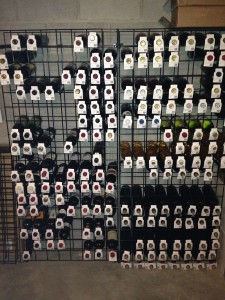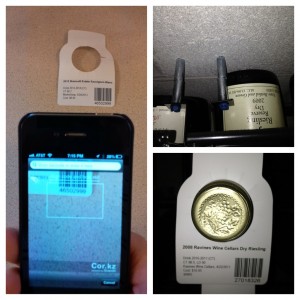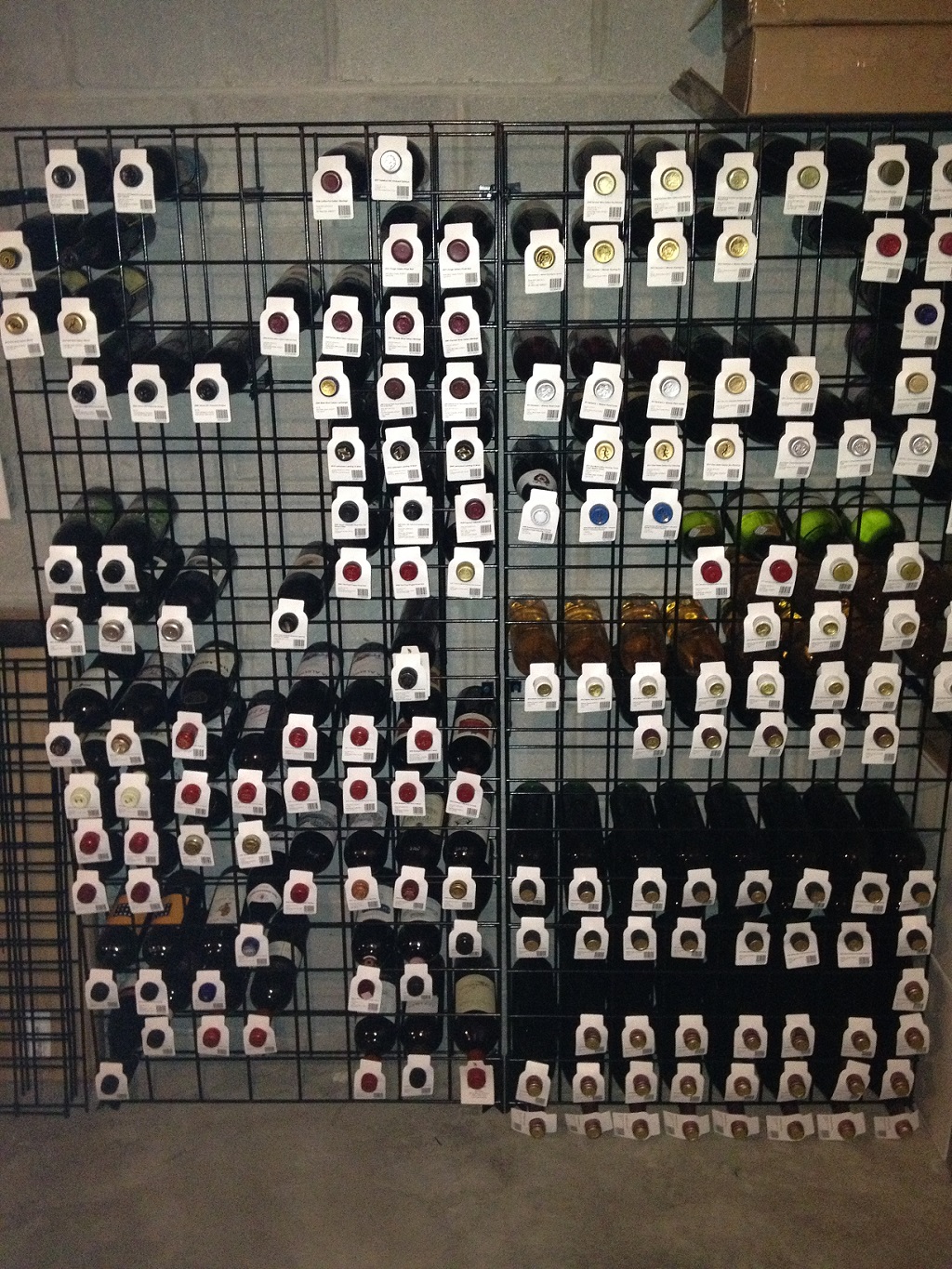
If you already own the wine cellar of your dreams, you can stop reading. I suspect that very few people will stop reading on this basis.
While this subject has been blogged about and written about quite often, I think that’s because so few of us have exactly what we want in the cellar (or basement, really). Many of us are in a continual pursuit of trying to build the ultimate cellar, whether that be physical construction, its contents, or both. No matter where you are in your level of collecting maturity, most of us could easily find an area of our cellar where we would like to improve.
My story is just one lover’s approach to building a cellar, but Lenn and Evan pushed me to share my experience.
Personally, I’ve had a wine collection ranging from 10 to 30 cases in inventory for about the last ten years. I travel frequently for work and over this time have moved on average every three years. My collection size was a balance between how much I drank, how much I was able to spend, and portability.
Last year, I married my beautiful wife and we moved to Rochester together in hopes to settle down and start a family. So as life events occur I did what any wine lover would do: I evaluated the impact on my cellar.
One of my previous three criteria, portability, seemed much less important. We would have a proper basement with plenty of storage.
So I decided to examine my current cellar size, and then anticipate my growth over the next two years. Since it’s much easier to have empty racks than it is to buy and install more after the fact, a cautious approach was to over-estimate. Accommodation for 400 bottles was my personal target. Figuring out how to achieve that with the least impact on my wallet was up next.
After a few hours of online research, I was able to rule out the ubiquitous individual bottle wood racking that so many dream cellars are made of. Although still on my wish list someday, they were too cost-prohibitive for me this time around. Fortunately, there are a number of alternatives, such as steel wire-pantry shelving, modular racking of almost any type of material, and even acrylic racking. I finally settled on this low-cost, high-capacity solution from Wine Enthusiast, which at a cost of around $0.70/bottle was one of the most economical I could find.
My cellar was going to be in my basement, and although temperature and humidity were not perfect, they were within a respectable margin and fairly consistent. So I eliminated the need for any sort of cooling/humidification unit (let’s keep that on my future wish list too).
I quickly received my racks from Wine Enthusiast but was disappointed when both of them were received damaged. A short phone call later and, thanks to an extremely helpful customer service rep, I had two new racks on their way. All in all, it was about a week’s delay in the project but a relatively small bump in the road, considering the fight that could have occurred had my purchase been from a less reputable dealer.
Installation was simple and straightforward and only took a few concrete screws and a cordless hammer drill, as I was mounting directly to the concrete block wall of my basement foundation. One minor alternation during installation, using longer than necessary concrete screws accompanied by two one-inch stainless steel spacing washers, so the racks sat away from the wall providing a little more bottle room.
The last and arguably the most important part of my cellar, as far as I was concerned, was tracking my inventory and being able to view my inventory from my iPhone or iPad. I’ve been a long-time CellarTracker user and my biggest struggle has been ensuring consistent alignment between my real inventory and my virtual inventory. Inevitably, I would work through my cellar updating my physical and virtual inventories to reconcile and within a few months after I forgot to “drink” a few bottles or immediately add my new purchases, my virtual inventory would be wrong. It was clear to me that having new wine racks and more bottle storage space wasn’t going to fix this problem.

I spent some time again searching the internet and in particular a few wine forums, and I determined the answer I felt was the best fit was to invest in the DYMO LabelWriter recommended by CellarTracker along with Wine Enthusiast reusable bottle tags and DYMO 1” x 2-1/8” labels of the same size. I decided I could quickly identify bottles that needed to be added to my virtual cellar by looking for those missing a bottle neck tag, and no matter if I or my wife drank a bottle, as long we set aside the neck tag, it would serve as a reminder to “drink” from CellarTracker. The added benefit of using a mobile application like the Cor.kz app in conjunction with CellarTracker allows me to simply scan the barcode on the tag using my phone’s camera to quickly find, rate, share and drink.
The DYMO installed quickly and easily and CellarTracker has all of the necessary label templates to incorporate great information on each label such as wine name, vintage, variety, location purchased, price and ratings. The 1” x 2-1/8” labels are a perfect fit to adhere to the reusable neck tags, although it does take some precision to ensure they line up correctly. Since the reusable neck tags are plastic, the labels can peel off, although with a little residue remaining, so they can be used multiple times.
I once again embarked on reconciling my physical inventory to my CellarTracker inventory. I’ve found through a bit of trial and error in past attempts that the easiest approach is to print a full wine list from CellarTracker and head down to the basement with a clipboard and pen in hand. As each bottle found its new home comfortably in the rack I either ticked it off the list or added it to the list.
When every bottle finally made its way into a location I was left with a paper list of changes I needed to make online. Some subsequent time spent on the computer and my online inventory was accurate. It’s a great feeling for any wine geek to know they can quickly tell someone that 31.7% of their wine is from New York State and 52.8% is from the US. Some wants to know about which producers you favor most? No problem. Ravines Wine Cellars, Hermann J. Wiemer and La Rioja Alta make up the top 3 in my cellar. But what about the variety of the wine in my cellar? My top three are Pinot Noir- 18.9%, Riesling-13.3% and Merlot-12.2%.
It has been three months since all the puzzle pieces have been in place and I believe I achieved the level of visibility, accuracy and access to my wine cellar that I had targeted. Have I achieved the cellar of my dreams? Far from it. But I can honestly believe that I have the best solution to achieve all of my cellar goals while balancing with a happy wife and accountant.

